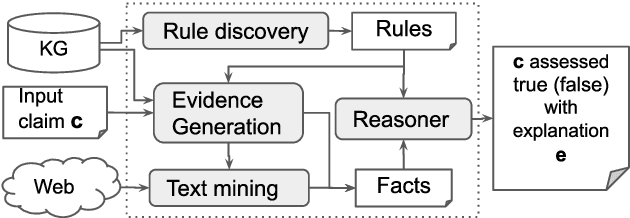Explainable Fact Checking with Probabilistic Answer Set Programming
Paper and Code
Jun 21, 2019



One challenge in fact checking is the ability to improve the transparency of the decision. We present a fact checking method that uses reference information in knowledge graphs (KGs) to assess claims and explain its decisions. KGs contain a formal representation of knowledge with semantic descriptions of entities and their relationships. We exploit such rich semantics to produce interpretable explanations for the fact checking output. As information in a KG is inevitably incomplete, we rely on logical rule discovery and on Web text mining to gather the evidence to assess a given claim. Uncertain rules and facts are turned into logical programs and the checking task is modeled as an inference problem in a probabilistic extension of answer set programs. Experiments show that the probabilistic inference enables the efficient labeling of claims with interpretable explanations, and the quality of the results is higher than state of the art baselines.
 Add to Chrome
Add to Chrome Add to Firefox
Add to Firefox Add to Edge
Add to Edge